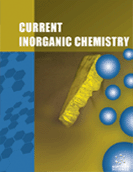Abstract
Background: The design, synthesis and physicochemical characterization of new switchable magnetic materials is among the most important tasks in the search of multifunctional compounds. Along these lines, intense efforts are focused on the investigation of cyanido–bridged coordination polymers: Prussian Blue Analogs and bimetallic coordination networks constructed of octacyanidometallates. Within this family, the CuII–[Mo(CN)8]4- assemblies have been extensively studied for their photomagnetic properties. The main aim of this work was the design, synthesis, as well as structural, spectroscopic and magnetic characterization of novel molecular material based on copper(II) complex with aliphatic bidentate polyamine and octacyanidometallate( IV) which shows a high number of cyanido bridges. The consequent objective was the study of potential photomagnetic properties of this new material. Methods: A newly synthesized compound [CuII(Me2en)][CuII(Me2en)2][MoIV(CN)8]·6H2O (1), Me2en = N,N– dimethylethylenediamine, was investigated structurally using single crystal X-ray diffraction, spectroscopically by studying IR and UV/Vis spectra, and photo- and magnetically characterized by studying its magnetic response in the dark and under irradiation in a variety of magnetic fields and temperatures. Results: Incorporation of N,N–dimethylethylenediamine (Me2en) into the CuII–[MoIV(CN)8]4- system leads to the construction of a novel coordination polymer [CuII(Me2en)][CuII(Me2en)2][MoIV(CN)8]·6H2O (1). The assembly reveals the unique structure consisting of 1–D chains constructed of {[Cu(Me2en)][Mo(CN)8]}n 2n- ladders with {[Cu(Me2en)2]2n+ pendant arms connected through cyanido–bridges to the Mo(IV) centers. Structural parameters of 1 were compared with other Cu(II)–Mo(IV) compounds with bidentate aliphatic polyamine ligands. Magnetic studies of 1 indicate paramagnetic behavior with weak antiferromagnetic interactions at low temperature. Photomagnetic studies with the application of 405, 473, 532 and 650 nm light sources and white light show no detectable photomagnetic effect. Conclusion: Novel 1–D ladder with pendant arms [CuII(Me2en)][CuII(Me2en)2][MoIV(CN)8]·6H2O (1) coordination polymer reveals unprecedented topological pattern and shows one of the highest complexities among 1–D octacyanidometallate– based chains. The local environments of metal centers were compared with other Cu(II)–Mo(IV) assemblies containing bidentate chelating polyamine ligands. In accordance with this analysis, two types of copper(II) moieties were distinguished among this kind of assemblies. Moreover, the analysis of [Mo(CN)8]4- for systems with various dimensionalities shows the same geometry and structural parameters of the moieties, differing in the number of bridging cyanides. Despite similar structural, spectroscopic and magnetic properties of 1 in comparison with other copper(II) complexes with aliphatic polyamines and octacyanidomolybdate(IV) revealing photomagnetic effect, no light induced increase of magnetization was observed. This leads to the observation that a large number of Cu(II)–NC–Mo(IV) linkages does not guarantee the presence of photomagnetic behavior.
Keywords: Coordination polymer, copper(II) complex, magnetic properties, octacyanidomolybdate(IV), photomagnetic studies.
 14
14


